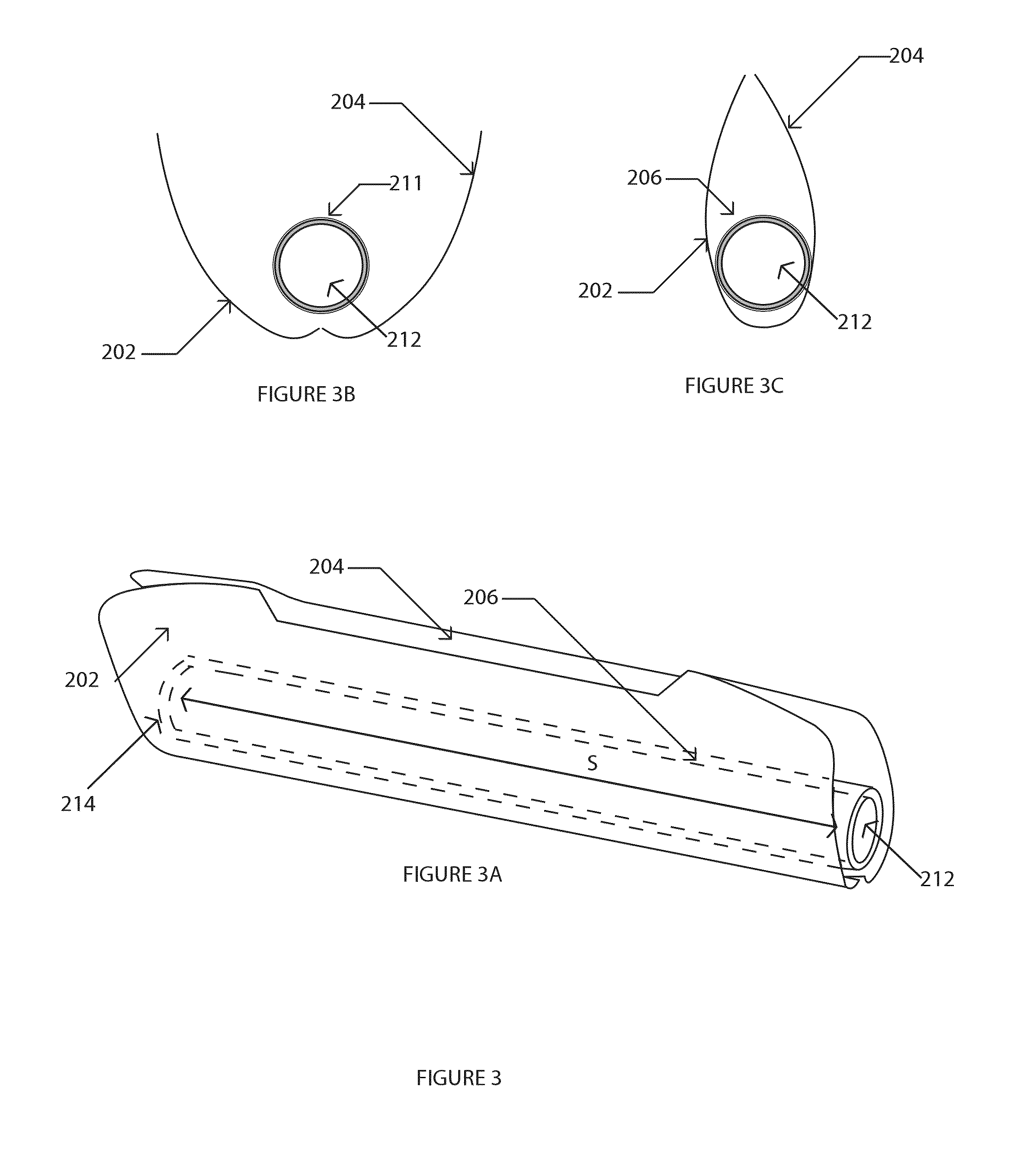Solar Cooking Apparatus
a technology of solar energy and cooking apparatus, applied in the field of solar cooking apparatus, can solve the problems of difficult and dangerous disposal after use, affecting the portability of solar energy, and affecting the use of solar energy, etc., and achieves the effects of convenient operation and understanding, quick and simple adjustment, and maximized and focused solar energy collection
- Summary
- Abstract
- Description
- Claims
- Application Information
AI Technical Summary
Benefits of technology
Problems solved by technology
Method used
Image
Examples
example 1
[0090]The solar cooking apparatus in this example is tubular with 24″ in length (61 cm), 1¾″ (45 mm) inside diameter, 2¼″ (57 mm) outer diameter surrounded by an anodized aluminum reflecting surface running the length of the tube which folds out to 8″ in width. The 1¾″ internal diameter is large enough to accommodate various meats, vegetables, and frozen finger-style foods while remaining highly portable. The entire apparatus has a dry weight of about three pounds (1.4 kg). It is capable of heating as much as 30 ounces (@ one liter) of fluid. Most fluids reach near boiling temperatures. About 4-8 ounces of fluids can be elevated to about 170° F. (77° C.) in a short time, depending on irradiance conditions (described in greater detail below).
example 2
[0091]The example described below was conducted at GPS coordinates 35°34′48″N 82°33′21″W. The weather conditions were as follows: Relative Humidity 63%, Winds 1.2 MPH from variable, scattered clouds 4600 ft, Heat index 91° F., dew point 71° F., UV 9 out of 16, Rainfall 0.00 in, visibility 10.0 miles.
[0092]A Flux 62 MINI IR Thermometer—Infrared, point-and-shoot style thermometer was used to measure the internal temperature of a solar collection element.
[0093]A DayStar Solar Irradiance Meter was used to measure sunlight intensity / quality by using a solar PV cell and algorithm, output given in Watts per Square Meter only, Standard Test Conditions for Solar PV is set at fill sun of 1,000 w / m2. The irradiance meter was pointed in the direction of the sunlight.
[0094]At 9:37 AM the outside air temperature and temperature within the solar collection element were measured at 77° F. The solar cooking apparatus was removed from its carrying case, and unfolded into an open position. Subsequentl...
PUM
 Login to View More
Login to View More Abstract
Description
Claims
Application Information
 Login to View More
Login to View More - R&D
- Intellectual Property
- Life Sciences
- Materials
- Tech Scout
- Unparalleled Data Quality
- Higher Quality Content
- 60% Fewer Hallucinations
Browse by: Latest US Patents, China's latest patents, Technical Efficacy Thesaurus, Application Domain, Technology Topic, Popular Technical Reports.
© 2025 PatSnap. All rights reserved.Legal|Privacy policy|Modern Slavery Act Transparency Statement|Sitemap|About US| Contact US: help@patsnap.com



